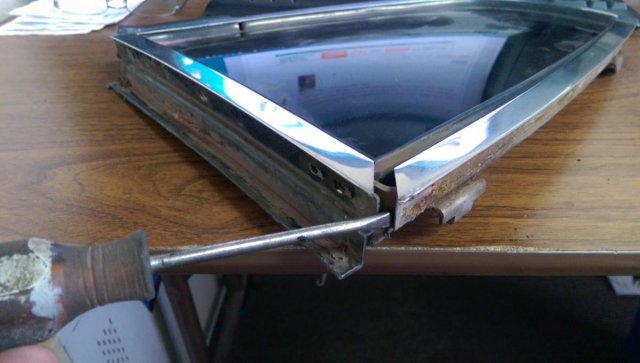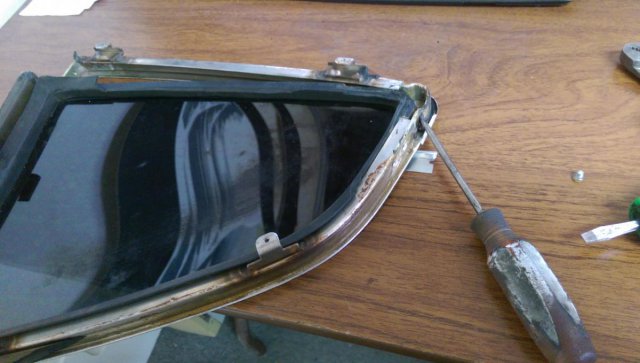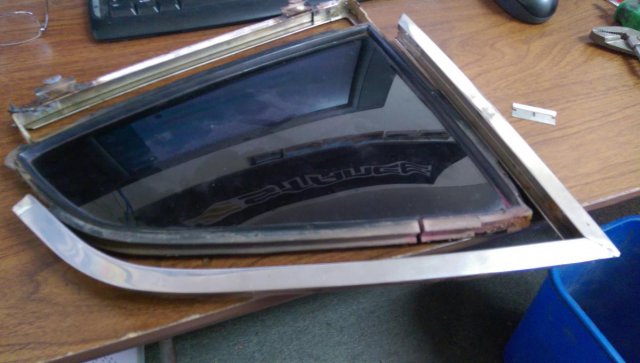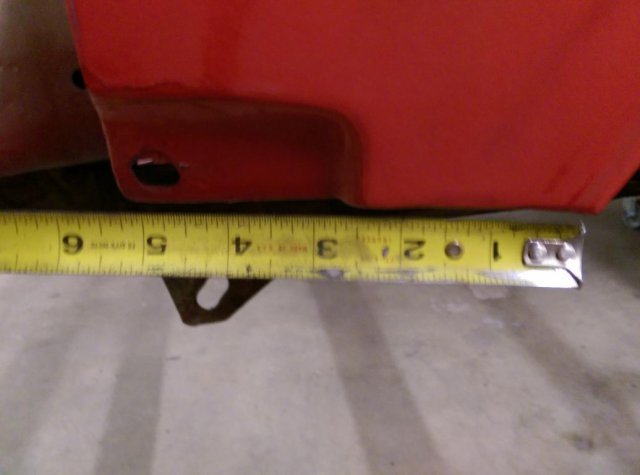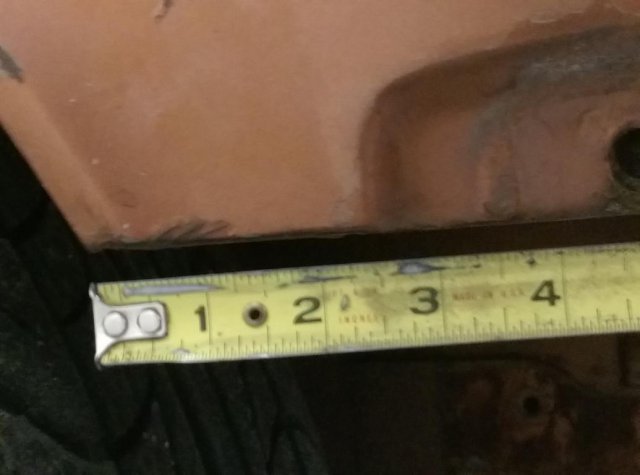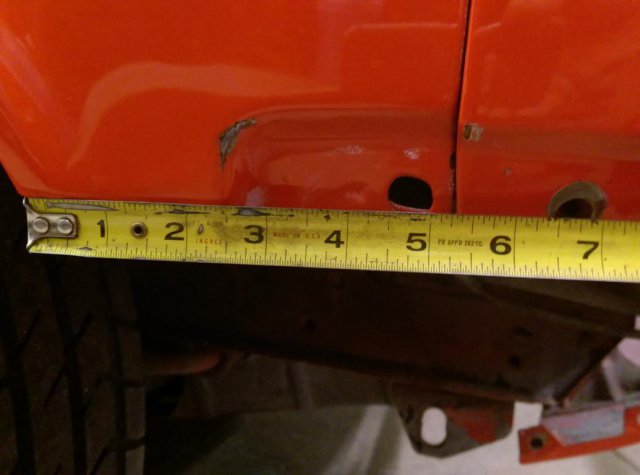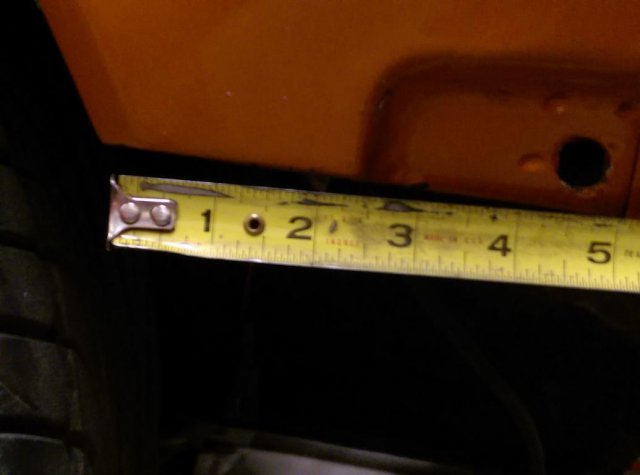-
Posts
672 -
Joined
-
Last visited
-
Days Won
8
Content Type
Profiles
Forums
Blogs
Events
Gallery
Downloads
Store
Everything posted by cgsheen
-
Ya... Didn't help... My 1974 260Z has the original A/C hard lines - all "flare" type fittings. They didn't use "o" rings for the engine bay connections. 1975 and 1976 280Z's were the same. I converted mine to 134a before I put it on the road after the turbo swap - 8 years ago. I didn't make any other changes to the stock A/C system. No "o" rings, didn't need "o" rings in any of the liquid lines or suction lines. The only "o" rings you'll find in the stock system during those years are in the compressor and expansion valve. Being an old-school plumber, I've always preferred a flare connection as a seal over the "o" ring connections they introduced with the ZX series...
-
?????
-

Can't remove quarter glass from frame.....help please.
cgsheen replied to Ken Smith's topic in S30 Series - 240z, 260z, 280z
I start with the top front corner - it's pretty easy to pry up a little. If you have to, try tapping here to get the top rear moving up and out. What it looks like with the top of the frame off... Then gently pry the rest of the window & gasket out of the bottom of the frame. You can cut the rubber if it's stubborn. Be careful of the glass. Mask it if you need to. Don't damage the bottom corner of the frame - it's held together with another spot-welded bracket. This window also had rock-hard gasket that chipped off in pieces - didn't cut too easily. Just be patient... -

Can't get glass out of quarter window 280Z
cgsheen replied to Ken Smith's topic in Z31 Series - 300ZX
We'll need pics. The frame is in two pieces and there are 2 "L" shaped brackets in opposite corners. Each bracket has one leg spotwelded to the frame and one leg with 2 screws in it. The screws are relatively close together. Make sure you got the screws out of the forward bracket (and not just the vertical trim piece) - usually they're covered with goo... The brackets are steel and tend to rust and expand, that coupled with the hardening of the rubber can make disassembly difficult. edit: And... I just noticed this is in a Z31 thread... -
The USA Z's had available factory installed A/C as an option starting in 1974. Most of us here in Arizona have A/C working in our Z cars. They work very well with the replacement R-12 refrigerant or converted to R-134a. The engine and A/C components aren't the thing that hamper the efficiency of the system - it's the dash duct work and blower design... To overcome the poor duct design somewhat, we use better blowers like the Kia blower swap (my personal choice) or the Honda Civic blower swap...
-
(Oh, "wing" = "fender". At first I was scratching my head about "reinforcing the front wing"... I got the "boot", "bonnet", "propeller shaft" and etc. when I had the Midget and TR6 in my younger years, but never knew "wing" until later in life. Sorry - that popped into my head when I finally saw your location. Many of us Yankees won't equate wing with fender...)
-

Little Heartbroken about perfect swap that never was..
cgsheen replied to ericp501's topic in Nissan L6 Forum
+1 -
If you're going to refurbish the entire hinge(s), completely removing them is probably the only way. Otherwise I'd advise against removing the hinge from the body. We learned early on that it can be a pain to realign the doors if you remove the hinge from the body. Plus, it's pretty much a two man job. Since then, we only pull the door off the hinge and leave the hinge on the body. But, we're not refurbing the hinges, just doing the body work on the doors (plus painting the jambs and hinges body color)... However, if there's a way to accomplish what you need to do on that detent roller with the fender & door off and the hinge still on the body, that's the way I would do it.
-

what to do? re: window rubber on door chrome
cgsheen replied to scooterhulk's topic in S30 Series - 240z, 260z, 280z
I didn't find or use staples... Hence the " " around "staples". Stiff wire of an appropriate size to go through the holes - cut and bent to facilitate it's use as "staples". I considered some type of adhesive as well. However, after I finished, the squeegee was held in place very well and there's little force would cause it to become dislodged in normal usage. I don't think the rubber would ever detach as long as the "staples" are in place. Plus, I thought about adhesive and the next time it has to be done. It will be much easier not to fight adhesive and clean adhesive off parts should it need to be redone. -
CAS is "toast", but you have "clean startup and idle"? I seriously doubt that... The L28ET CAS gives the ECU it's RPM signal. Without it, the ECU will never know the engine is spinning and will never apply spark or injector pulse. The CAS doesn't just "sorta work". I had an intermittent fall out issue with my stock CAS years ago, drove me nuts. Turned out to be a bad solder connection on one of the 4 spades. But, it didn't ever cause a poor running condition - it shut the engine down completely when the ECU lost the CAS signal. Normally I could restart either immediately or after a bit of cool-down. Took me a while to get that one figured out and after I resoldered the spades, never had the problem again.
-

240z 3-piece valance fitment
cgsheen replied to GreenBanana's topic in S30 Series - 240z, 260z, 280z
This valance piece doesn't look right at all. The Z Car valance attaches to the fender at two points on the top rear of the valance. The valance piece in the pic hardly has room for one bolt! -

240z 3-piece valance fitment
cgsheen replied to GreenBanana's topic in S30 Series - 240z, 260z, 280z
No, the 1975 280Z "Museum Car" that we had in here had 240-260'ish style valances. Not exactly the same, because they were "deeper" I think for the lower radiator core support. Maybe the late 260's were also this way - (I'll check Patrick's next time he's at the shop). My early 260's were the same as the 240's. My Son's 1976 280Z has the "bulbous" valance pieces that look nothing like the earlies. We don't get many late 280's (77-78) in here though. Maybe I'll have to drag them all out and take pictures of the years that I do have... -

240z 3-piece valance fitment
cgsheen replied to GreenBanana's topic in S30 Series - 240z, 260z, 280z
1976 (01/76) 280Z 1973 (07/73) 240Z 1971 240Z (this car is from Switzerland) Series 1 - 1970 240Z These are all cars I currently have in the shop and I am certain that the 1976 and 1973 fenders are original to the car. I believe the 1971 (Swiss) is original to the car but I haven't verified. The 1970 - I have no idea if that fender is original. I also have a couple of 1972's here but I didn't bother taking pictures because the fenders are all the same. I don't have any "late" Z's (77-78). I also have several valences here - including the Swiss "no cutout for turn signal lense" pieces. (Switzerland apparently didn't allow turn signals under the bumper. The turn signals on this car were mounted on top of the front bumper.) -
You mean they screwed the strut cartridge out of the adapter tubes? That's standard procedure when you're welding the adapter tubes to the hubs... There is not really an "original position" for a fully adjustable coilover set like McKinney's. They're designed to give you inches of adjustment range from near stock to pretty low. Start by screwing the strut cartridge in 2" on each corner and see how it sits. When it's back on the ground roll it back and forth a bit to settle it a bit. You'll almost undoubtedly want to re-adjust your ride height from there. And, after you've driven it for a few weeks or months, you may need to adjust your ride-height again.
-
Yup...
-
Actually, Idaho Falls is the same way - much drier than most people would think. And to the West is pretty much high-desert. It's the Snake River that keeps it watered...
-
OR, the factory A/C from a 260Z!
-
+1 What part of Idaho, OP? I grew up in Idaho Falls. I think it's a little odd to find a mostly rust free 260Z chassis in a field in Idaho, but if you have, you've found a Gem! For the Z nuts back East and in the mid-West that's a unicorn. But, not because of the number or the year. I'm one of the oddballs that thinks the 260 is the best of both worlds - as long as it's engine swapped... But in the end, a low-rust chassis of ANY year is worth saving and passing on to someone that needs it.
-
Get a new one from Nissan. Brand new and much better quality than the originals - the plastic is much thicker, especially in key breakage areas. They also have a choke lever slot if you need one with a plug that goes in it if you don't...
-

what to do? re: window rubber on door chrome
cgsheen replied to scooterhulk's topic in S30 Series - 240z, 260z, 280z
Ya, but you're not going to like it... The original staples are pretty tough - stainless or hardened steel. They had to be to punch through the stainless molding and metal backing plate. I tried to unbend them with the thought of maybe re-using the original staples. wrong... They are extremely difficult to straighten and many just break while you're struggling to do so. I ended up cutting off the curled end of the staples with my dremel cutting wheel so I could remove them. At this point you really need a pneumatic stapler to reassemble. I don't - so I used the existing holes and fashioned my own "staples" to put the new rubber strips on the metal framework. Definitely not as awesome as the original fasteners, but I can always re-do them at any point should they not hold. -

280zx turbo ignition control module swap
cgsheen replied to rickyellow zee's topic in Ignition and Electrical
Oops OOPS! You're correct again. I'll go back and edit my incorrect posts above. The transistor "collector" should be grounded. -

280zx turbo ignition control module swap
cgsheen replied to rickyellow zee's topic in Ignition and Electrical
You posted a component diagram, not an electrical diagram. The stock 280ZXT Ignitor (Power Transistor, Electronic Ignition Module) is grounded to the frame and has two wiring connectors via a "T" shaped connector on the ignitor: B/W from the ignition switch = battery voltage at IGN ON and Y/W = signal from ECU to fire the coil. The stock Ignitor passes power to the coil "+" terminal via a short B/W from the Ignitor to the coil. The output from the Ignitor is an L (blue wire) that runs to the coil "-" terminal. The amplified output of the Ignitor causes the coil to spark. I would say: look at the Turbo electrical diagram and you'll see what I'm referring to. I don't think I'm "mis-remembering" anything (apparently, I WAS!) - I've been over this dozens of times with multiple people and hands on with the stock coil/ignitor on numerous occasions. I don't know if the PRW-2 will work as intended, but I used one (unknowingly) with my F31 (Infiniti M30) engine management system for years. That was with the stock F31 coil and wiring harness setup however. I've never personally used one to drive the stock 280ZXT coil. However, it'll be an interesting replacement if it works for Ricky... But, the scheme follows the diagram above where the transistor "base" is connected to the Y/W from the ECU, the transistor "collector" is connected to the B/W (battery voltage @ IGN ON) (transistor "collector" should be tied to GND) and the transistor "emitter" is the L output to coil "-" It could be that the PRW-2 will perform the same function. I would say yes. Sorry for my mis-information, the transistor "collector" should be grounded (not powered) so change the power wire to GND. I'm interested to know if this works as a replacement, so be sure and let us know. And I hope you've double checked and cleaned your wiring connectors... -

280zx turbo ignition control module swap
cgsheen replied to rickyellow zee's topic in Ignition and Electrical
The coil/ignitor wiring is different in the early-to-mid 1990's Nissan's that used the PRW-2. (true but not relevant) From the Power Transistor wiring diagram above: W/B = transistor "base" = trigger = input from ECU (Y/W on Ignitor "T" connector) L = transistor "collector" = voltage input or source = (on L28ET Ignitor this would be the B/W +12V (battery voltage) @ IGN ON) GND - The stock ignitor gets it's GND from the frame (coil bracket attached to fender...) B = transistor "emitter" = signal out to coil = (same as L (blue) on L28ET ignitor -> "-" terminal on stock coil) The difference (and confusion) in the wiring: Power @ IGN ON in the later cars is delivered to the coil and then thru the coil to the Power Transistor collector. (On the stock L28ET, it's the opposite - power @IGN ON goes first to the Ignitor, then from the Ignitor to the coil "+" terminal) The output of the emitter is shown to go to the coil to trigger spark, but is also "tee'd" to a pin on the ECU that is tied to GND in the diagram. I'm not smart enough to know why the tie to ground... (again, not relevant...) -
^^ Hard to answer that question without knowing how good you are at wiring and electrical. Your question about using a 280Z EFI harness on an L28ET with a Z31 MAF and ECU leads me to believe that either you're a wiring wizard - or... The problem with all L28ET ECCS harnesses (and all the L28E EFI harnesses) is: AGE. They're all pretty hammered - connectors crusty and oxidized, wire itself oxidized. They were never really weather-proofed and the corrosion leads to faulty connections and oxidized wire leads to skewed sensor readings due to the added resistance. Most people - myself and 98blackbell (tooquick260's Dad) (along with countless others) included - start with the stock or stock-ish ECCS harness, spend countless hours trying to find the problems it's causing or that pop up randomly AND THEN move on to the engine management system we should have installed in the first place. Oh, I ran mine stock for years. And it was a great learning experience - believe me... But honestly, I wish I had all those hours back. I wish I had put all those hours into a different ECU and management scheme from the start. Getting back to your question (because I doubt someone is going to post: "Here's exactly how you do that! Step One:") Download the FSM's for both your 280Z and the 1982 280ZX, learn everything there is to know about the L28ET and it's ECCS. Now learn all about the Z31 ECU and MAF and how to adapt the wiring between the 3 different models. Read all the threads here on HybridZ about the swap, swap wiring, Z31 ECU adaptation... Then get to work! A turbo engine in these things is a blast!

